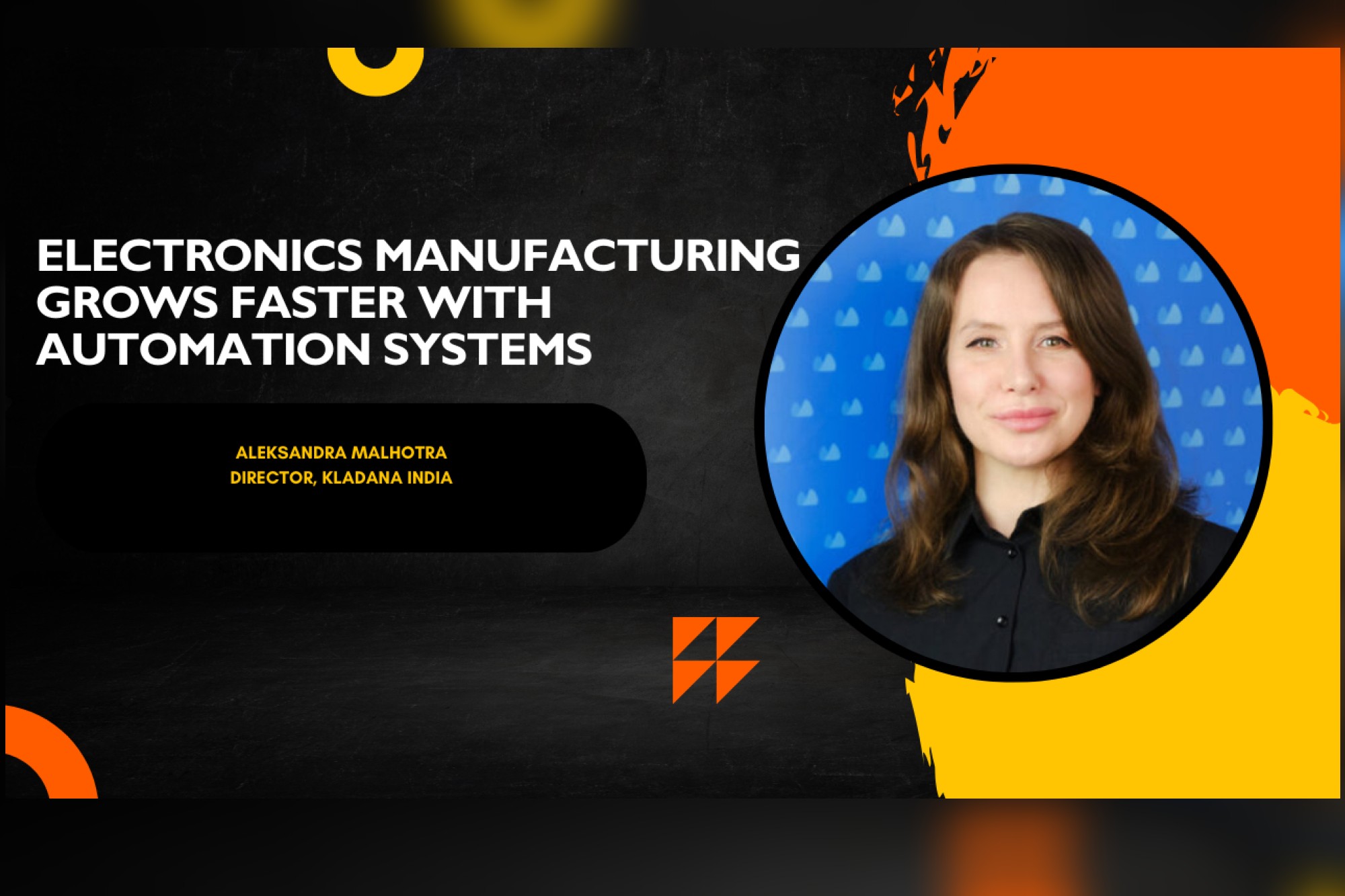Electronics manufacturing grows faster with automation systems
By Staff Report April 15, 2025 12:07 pm IST
Digitisation involves turning paper-based records, invoices, and processes into digital formats, while automation uses software and technology to perform tasks without human involvement. Aleksandra Malhotra, Director of Kladana India, emphasises the importance of automation and digitisation in the electronics industry.
The electronics industry is moving fast. Whether you’re a startup launching the next big gadget or a seasoned manufacturer making essential devices, you need to keep up with rising consumer expectations and complex supply chains. Managing production with spreadsheets, manual inventory checks, and scattered sales records won’t cut it anymore.
Automation and digitisation are no longer optional — they’re essential for efficiency, accuracy, and growth. In 2024, the global manufacturing execution systems market size was valued at USD 14.88 billion, and global marketing is projected to grow from USD 16.57 billion in 2025 to USD 41.78 billion by 2032, exhibiting a CAGR of 14.1% during the forecast period. And despite that, many businesses are still struggling with outdated methods while competitors move ahead.
Digitization vs. Automation — What’s the Difference?
Digitisation is turning paper-based records, invoices, and processes into digital formats. Think of it as scanning documents into a computer.
Automation takes it further by using software and technology to perform tasks without human involvement. Imagine a system that tracks inventory, orders supplies when stock is low, and updates financial records — all automatically.
With automation, electronics manufacturers can eliminate errors, speed up production, and focus on growth. And it’s a booming industry; hence, automation is the need of the hour.
How automation & digitisation help electronics manufacturers thrive
Faster, more organised production
Speed & Accuracy: Automated systems can process up to 50,000 components per hour with 99.99% accuracy — something humans simply can’t do.
Fewer Errors: Machines don’t get tired or distracted, reducing defects and improving product quality.
Real-Time Monitoring: Sensors and AI-powered systems track production in real time, allowing for quick adjustments and smoother operations.
A smartwatch manufacturer struggling with late deliveries automated their assembly line. That resulted in production time dropping significantly, and errors were reduced.
Smarter Supply Chain & Inventory Management
No more overstocking or shortages: Automated systems track inventory levels, predict demand, and place orders just in time.
Seamless procurement: Barcode scanning and automated supplier tracking ensure a smooth supply chain.
Works for businesses of all sizes: Whether you run a small startup or a large factory, automation can streamline operations.
A mobile accessories brand implemented automated inventory management, ensuring it always had the right products in stock.
Stress-Free Compliance & Traceability
Meet industry standards: Automation ensures compliance with strict regulations like RoHS and ISO 9001.
Easy audits: Real-time tracking of components and production batches simplifies compliance checks.
No extra software needed: Many modern systems come with built-in compliance tools.A laptop manufacturer automated compliance tracking, reducing regulatory paperwork and avoiding costly fines.
Lower costs & higher profits
Save on labour costs: Automation reduces the need for manual work, cutting down payroll expenses.
Fewer errors = less waste: Avoid costly rework and scrap by minimising human mistakes.
Better supply chain management: Digital tools optimise stock levels and reduce inventory holding costs.
A gaming console company automated production and significantly cut labour costs while improving product quality.
Better Pricing & Demand Forecasting
Smart purchasing: Systems generate purchase orders automatically based on real-time inventory levels.
Track sales in real time: Know exactly what’s selling and adjust production accordingly.
Data-driven pricing strategies: Use AI-powered insights to price products competitively and maximise profits.
A TV manufacturer used automation to track demand trends and adjust pricing, leading to increased sales.
Smarter, data-backed decision-making
Big data insights: Learn what customers want and optimise production accordingly.
Predict demand changes: AI-driven analytics help forecast trends, reducing overproduction and waste.
Make confident business decisions: Data-driven insights provide clarity and reduce guesswork.
A headphone company used predictive analytics to anticipate market trends, allowing it to launch new products ahead of competitors.
The future is automated
Electronics manufacturing is at a turning point. Companies that adopt automation and digitisation will stay ahead, while those that resist will struggle. The benefits are clear: faster production, fewer errors, lower costs, and smarter decision-making.
The time to act is now — invest in automation, embrace digitisation, and future-proof your business before the competition leaves you behind.
Cookie Consent
We use cookies to personalize your experience. By continuing to visit this website you agree to our Terms & Conditions, Privacy Policy and Cookie Policy.









